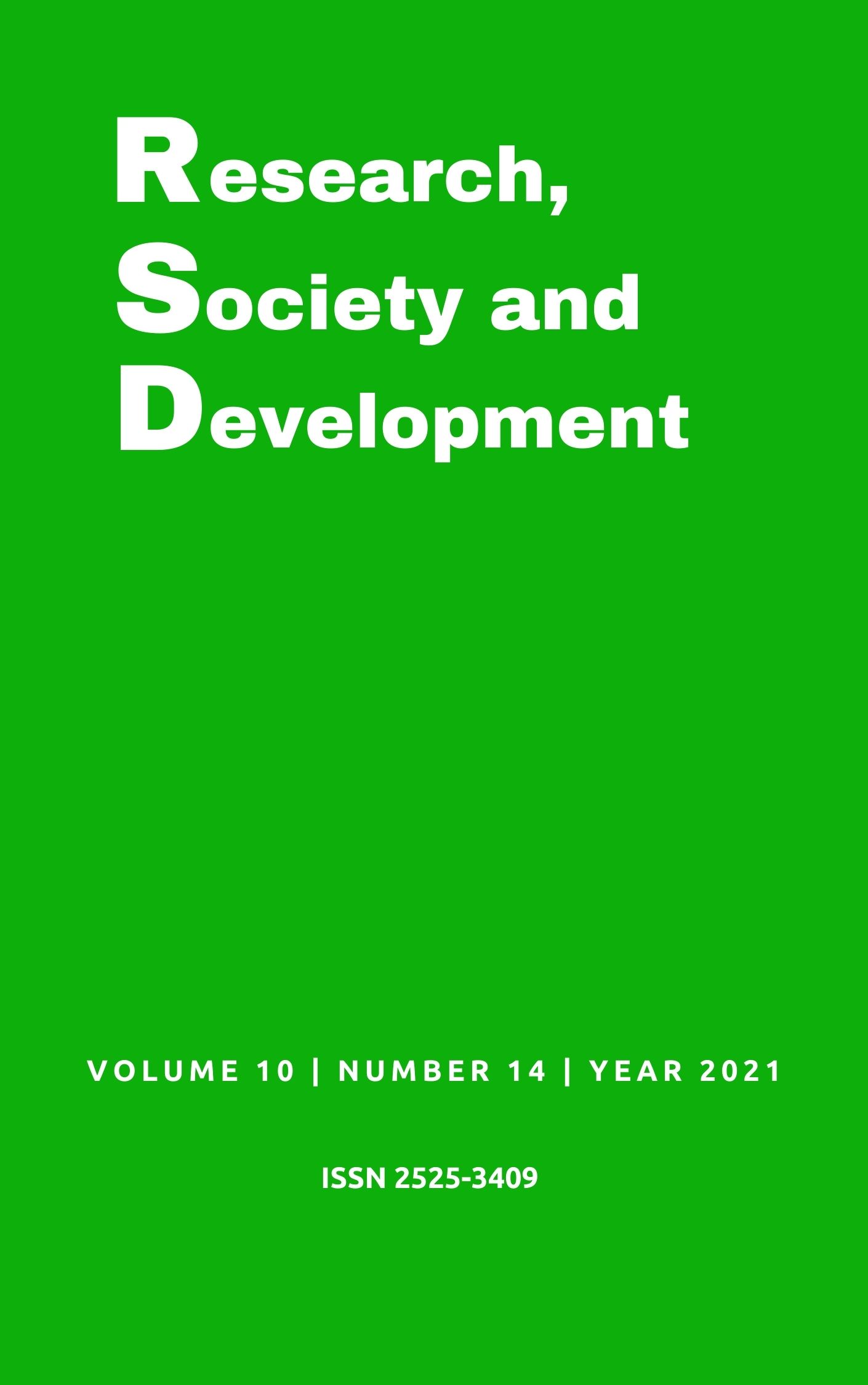Interação homem-máquina e as formas de comunicação humana
DOI:
https://doi.org/10.33448/rsd-v10i14.20777Palavras-chave:
Comunicação, Tecnologia da informação, Interação homem-máquina, Ética, Evolução, Máquinas digitais.Resumo
A comunicação é o principal meio de propagação da cultura e ferramenta para a integração da sociedade humana. Nos últimos tempos, o avanço da tecnologia da informação vem potencializando esse meio. O objetivo do presente artigo é analisar a forma e o meio como as pessoas usam as máquinas digitais para se comunicarem e interagirem. A Interação Homem-Máquina (IHM) é conceituada e tratada como tema central deste estudo. As principais informações são tiradas de artigos científicos, pesquisas, livros e reportagens. Utiliza-se uma estrutura que caracteriza as problemáticas envolvendo a ética, evolução, dependência e demais impactos da IHM, propondo uma pesquisa tipo survey, em forma de questionário, com perguntas relacionadas ao tema. Os resultados apontam que a maioria da população jovem se interessa pelas máquinas digitais e possui relações com elas, gerando uma dependência por parte dessa população com relação a essas máquinas. Portanto, conclui-se, de maneira geral, que a aceitação e valorização da Interação Homem-Máquina no mundo está se intensificando.
Referências
Altares, G. (2021). E se nós formos os neandertais? As últimas descobertas genéticas reabrem o debate sobre a possibilidade de que esta espécie não tenha se extinguido, mas foi integrada aos ‘sapiens’. El País. https://brasil.elpais.com/ciencia/2021-04-10/e-se-nos-formos-os-neandertais.html.
Big House Web. (2019). Como surgiu a inteligência artificial? Big House Web. https://blog.bighouseweb.com.br/como-surgiu-a-inteligencia-artificial/.
Boccard, T. (2020). Usos e riscos do reconhecimento facial. Use Mobile. https://usemobile.com.br/usos-reconhecimento-facial/.
Carnevalli, E. (2019). “A inteligência artificial vai tornar os profissionais irrelevantes e ‘hackear’ seres humanos”. Época Negócios. https://epocanegocios.globo.com/Tecnologia/noticia/2019/11/inteligencia-artificial-vai-tornar-os-profissionais-irrelevantes-e-hackear-seres-humanos.html.
Cervo, A. L.; Bervian P. A. (2002). Metodologia Científica. Prentice Hall.
Floridi, L. (2002). Information Ethics: As Environmental Approach to the Digital Divide. Philosophy in the Contemporary World, 9 (1), 39-45. https://doi.org/10.5840/pcw2002915.
Floridi, L. (2009). The Information Society and Its Philosophy: Introduction to the Special Issue on “The Philosophy of Information, Its Nature and Future Developments”. The Information Society: An International Journal, 25 (3), 153–158. https://doi.org/10.1080/01972240902848583.
Gil, A. C. (1999). Métodos e técnicas de pesquisa social. Atlas.
Harari, Y. N. (2018). Sapiens: uma breve história da humanidade. L&PM Editores S. A.
Hautsch, O. (2009). Como funciona a Realidade Aumentada. TecMundo. https://www.tecmundo.com.br/realidade-aumentada/2124-como-funciona-a-realidade-aumentada.htm.
Koch, I. V. (2003). A interação pela linguagem. Contexto.
Magalhaes, P. L. (2010). Influências da evolução tecnológica na comunicação humana: estudo das redes sociais. Belo Horizonte: Universidade FUMEC. https://www.academia.edu/https://www.academia.edu/37741204/Influ%C3%AAncias_da_evolu%C3%A7%C3%A3o_tecnol%C3%B3gica_na_comunica%C3%A7%C3%A3o_humana_estudo_das_redes_sociais#:~:text=PATRICK%20LEANDRO%20MAGALH%C3%83ES%20Influ%C3%AAncias%20da,humana%3A%20estudo%20das%20redes%20sociais.&text=O%20presente%20estudo%20visa%20responder,sendo%20enfatizadas%20as%20redes%20sociais.
Oliveira, F. F. R. de; Ferreira, M. M.; & Furst, A. (2013). Estudo da usabilidade nas interfaces homem-máquina. E-xacta, 6 (2), 93-105. http://dx.doi.org/10.18674/exacta.v6i2.1079.
ONU NEWS. (2019). Estudo da ONU revela que mundo tem abismo digital de gênero. ONU News. https://news.un.org/pt/story/2019/11/1693711.
Pacievitch, T. (2021). Tecnologia da Informação e Comunicação. Info Escola. https://www.infoescola.com/informatica/tecnologia-da-informacao-e-comunicacao/.
Pancini, L. (2021). Robô Sophia, que imita expressões faciais, começa a ser produzida em massa: Empresa criadora do robô acredita que ele pode ser essencial para alguns serviços durante a pandemia. Exame. https://exame.com/tecnologia/robo-sophia-que-imita-expressoes-faciais-comeca-a-ser-produzida-em-massa/.
Parsons, J. (2016, 22 mar). Watch Sophia the 'sexy robot' claim she will 'destroy humans' – leaving creator red faced: A mistake during a technical demonstration at the SXSW tech show revealed the android's true intentions. Mirror. https://www.mirror.co.uk/tech/watch-sophia-sexy-robot-claim-7606152.
Piaget, J. (1978). A formação do símbolo na criança. Zahar.
Rosa, J. G. S., & Moraes, A. M. (2010). Avaliação e projeto no design de interfaces. 2AB Editora.
Schweitzer, A. (1950). Aus meinem Leben und Denken. Hamburg: R. Meiner Verlag.
Sousa, R. (2019). Meios de comunicação. UOL - Mundo Educação. https://mundoeducacao.uol.com.br/geografia/meios-comunicacao.htm.
Suzanna. (2018). A influência das redes sociais na comunicação humana. Cesar. https://www.cesar.org.br/index.php/2018/08/27/a-influencia-das-redes-sociais-na-comunicacao-humana/.
Universal Robots Brasil. (2020). Repensando a relação homem x máquina. Universal Robots Brasil. https://www.universal-robots.com/br/blog/repensando-a-relac%C3%A3o-homem-x-m%C3%A1quina/.
Downloads
Publicado
Edição
Seção
Licença
Copyright (c) 2021 Lucas Rocha Fernandes ; Sávio Santos Fontana; Arthur da Mata Figueiredo; Pedro de Souza Mattioli; Priscilla Chantal Duarte Silva

Este trabalho está licenciado sob uma licença Creative Commons Attribution 4.0 International License.
Autores que publicam nesta revista concordam com os seguintes termos:
1) Autores mantém os direitos autorais e concedem à revista o direito de primeira publicação, com o trabalho simultaneamente licenciado sob a Licença Creative Commons Attribution que permite o compartilhamento do trabalho com reconhecimento da autoria e publicação inicial nesta revista.
2) Autores têm autorização para assumir contratos adicionais separadamente, para distribuição não-exclusiva da versão do trabalho publicada nesta revista (ex.: publicar em repositório institucional ou como capítulo de livro), com reconhecimento de autoria e publicação inicial nesta revista.
3) Autores têm permissão e são estimulados a publicar e distribuir seu trabalho online (ex.: em repositórios institucionais ou na sua página pessoal) a qualquer ponto antes ou durante o processo editorial, já que isso pode gerar alterações produtivas, bem como aumentar o impacto e a citação do trabalho publicado.


